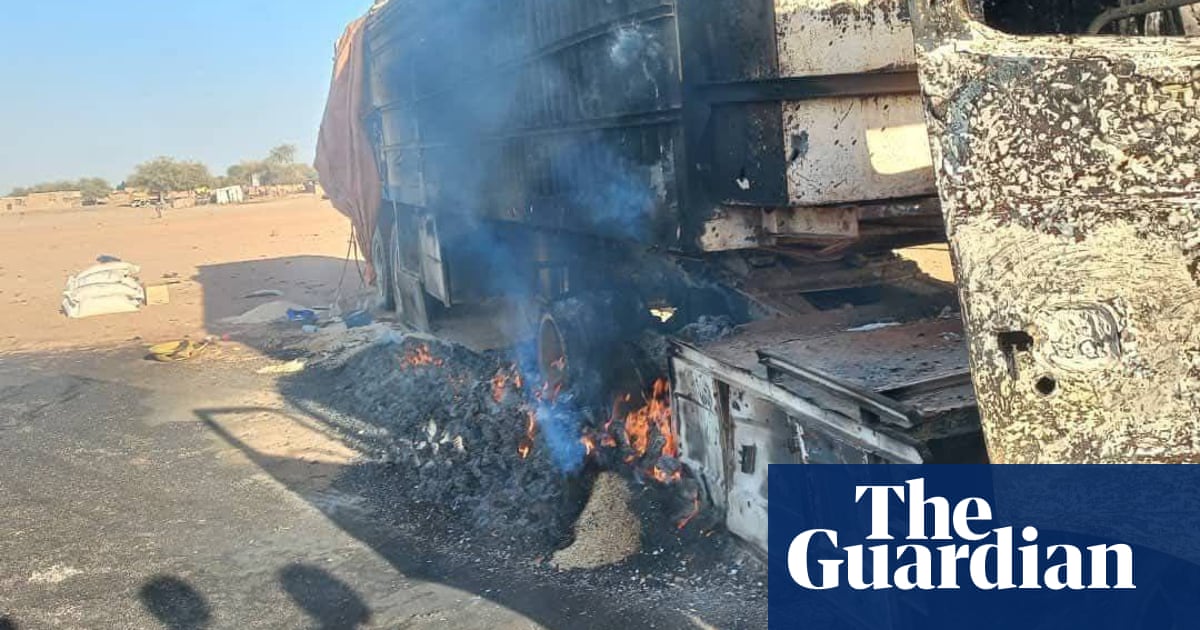A UN aid convoy carrying critical food supplies to a famine-threatened city in westernSudanhas been targeted in a brutal attack that appeared to have caused “multiple casualties”.
A number of trucks belonging to the UN’s food and children’s agencies were attacked as they headed towards El Fasher, capital of North Darfur, which has beenbesieged by the paramilitary Rapid Support Forces(RSF) for more than a year.
As details of the atrocity emerged, theUN’s refugee agencyconfirmed the number of people who had fled the country since Sudan’s civil war began had surpassed 4 million, and warned that the scale of displacement was “putting regional and global stability at stake”.
The attack on the aid convoy occurred about 45 miles (75km) from El Fasher, in Al Koma, a stronghold of the RSF.
A spokesperson for the UN children’s agency,Unicef, said: “We have received information about a convoy withWFP[World Food Programme] and Unicef trucks being attacked last night while positioned in Al Koma, waiting for approval to proceed to El Fasher.”
Al Koma was the location of another atrocity at the weekend, when an airstrike on a civilian market by the Sudanese army reportedly killed at least 89 people.
The area is firmly under the control of the RSF, with aid trucks forced to navigate a series of the paramilitary group’s checkpoints to reach El Fasher.
However, the attackers of the convoy have not yet been officially identified.
Last week the WFP expressed “shock” after its premises in El Fasher were repeatedly shelled by the RSF.
El Fasher is home to about 2 million people, including about 800,000 internally displaced persons who fled to the city from across Darfur and it remains the only one of five state capitals in the Darfur region not to fall under RSF control.
In recent months, it has endured daily shelling amid an ever-tightening siege. Within the city itself, food supplies are running so low that the UN has warned of famine.
Activists trapped within El Fasher have said thousands of people face starvation as essential foods and medicines disappear from markets because of the RSF’s siege.
Speaking to the activist networkAvaazseveral days ago, a volunteer called Adam said community kitchens in the city no longer had access to maize or wheat. “We used to have goods coming in regularly through vehicles, but now the only goods that enter the city come on donkeys,” he said.
“For the entire city of El Fasher, we have no more than 10 donkeys that enter the city carrying goods per day. Even these people carrying limited supplies on their donkeys get questioned and interrogated at RSF [checkpoints].”
The civil war, now in its third year, has caused theworld’s biggest humanitarian crisis.
In addition to the 4 million people who have now fled Sudan, a record 11.6 million people have also been displaced within the country, about half of whom are in the Darfur region.
Both the Sudanese army and the RSF have been accused of myriad war crimes and using starvation as a weapon of war.
